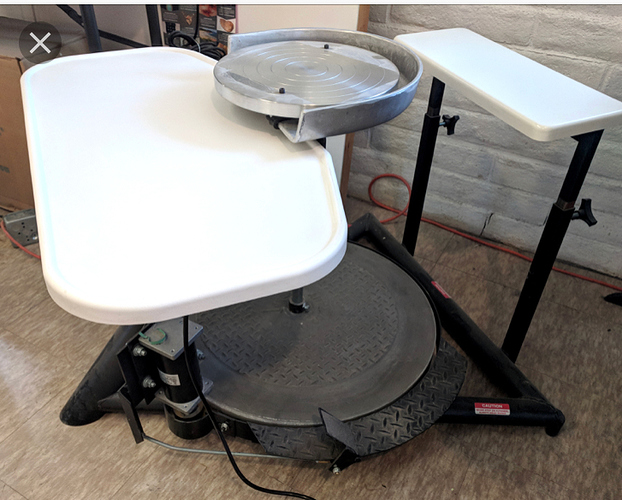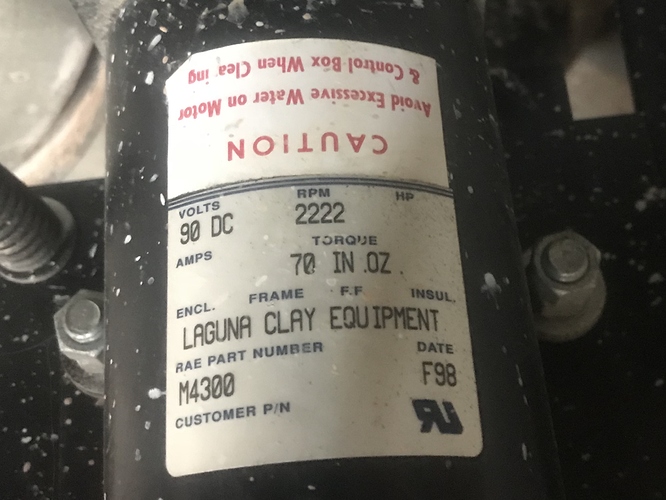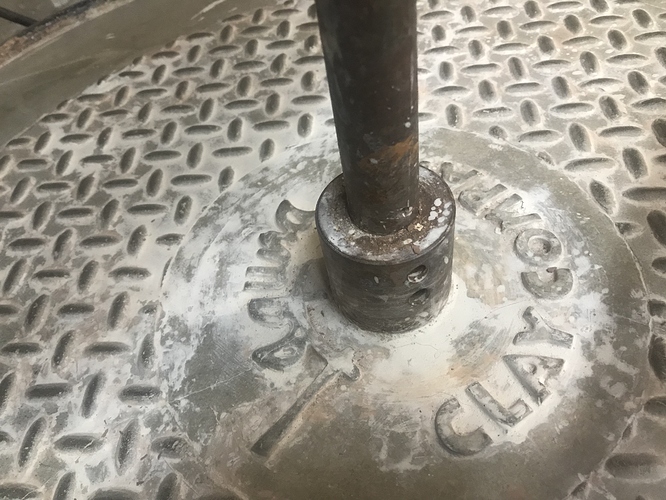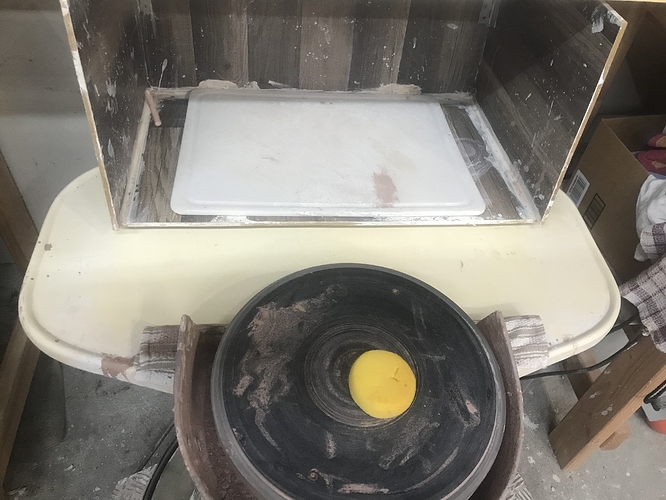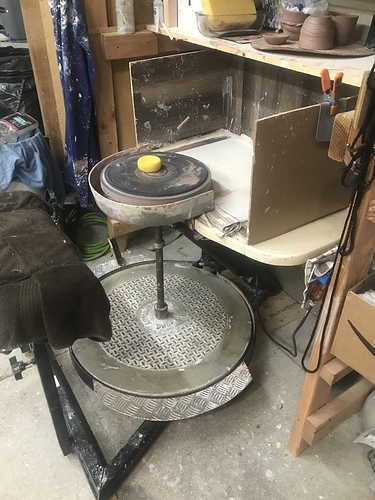The Laguna Kick Wheel with an added D.C. motor develops 1/2 horsepower through state-of-the-art electronics; complemented by a variable speed controller. And a home made splash guard. 2 bats.
If your looking for a wheel that’s in great shape I have one ready to go.
Steve.
Steve do you have pictures and if so would you kindly post them thanks!
70 In Oz torque = .36 Ft Lb
.36 Ft Lb X 2222 RPM / 5252 = .15 HP
What am I missing?
maybe something to do with the variable speed controller?
The Laguna Kick Wheel with an added D.C. motor develops 1/2 horsepower through state-of-the-art electronics; complemented by a variable speed (0-250 RPM) controller and reversing switch.
And it also has a pulley system. 1-1.5 in to 12-14in on the bigger pulley.
You do change the torque delivered when a pulley changes the speed. But the power (horsepower) cannot be increased by mechanical ratio of output shaft of motor to input pulley of wheel. The product of torque times speed IS the power. The formula divides by a number determined by the units that torque, speed, and power are measured in.
Mike
TL;dr Doubtful.
Fuller explanation:
For the speed controller to cause the motor to product more power it would have to deliver more voltage than what the motor label calls for, or up to about 40 percent can be increased if it was a purely inductive or capacitive load and the controller corrects for power factor, which only applies to an AC motor, this motor runs on DC. If the controller delivers twice the label voltage you might get up to 4 times the power out of the motor, but I have never seen any DC motor controller try more than about a 25 percent increase to the motor windings. When that is done it is typically for extremely brief periods when the motor is starting up to overcome static friction. The motor gets significantly hotter even with short pulses of over voltage because the motor cannot cool efficiently when it is stalled.
Mike
This item is sold
Thanks
